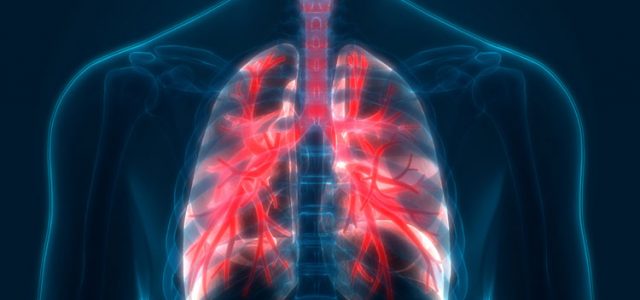
Did you know there are more than 65 million people around the world suffering from moderate to severe chronic obstructive pulmonary disease? “How can this be true,” you ask? COPD isn’t just one disease; it is a diagnosis that comes along with multiple conditions that can severely damage your lungs. The meaning of the acronym (COPD) is a chronic obstructive pulmonary disease. It is one of the top causes of death among adults, yet most people don’t know anything about it. This sounds horrible but I assure you it isn’t all bad if you know how to treat COPD. New COPD treatments are being developed that will soon be able to repair damaged lungs and also the use of COPD inhalers can greatly reduce COPD symptoms and let you return to your best life.
Related Topics (Ads):
Having a good understanding of COPD is the first step to treating or managing the illness. Permanent lung damage caused by chronic obstructive pulmonary disease (COPD) starts much earlier than previously thought, even before patients are showing symptoms.
It may sound a bit scary when doctors diagnose someone with COPD. It means that the person has multiple severe conditions that are life-threatening. But this is going to change with the breakthrough discovery, led by Dr. Tillie-Louise Hackett, associate professor in the University of British Columbia’s faculty of medicine who found that even patients diagnosed with mild COPD have already lost a significant portion of their small airways—more than 40 percent—on average.
COPD is a chronic, progressive condition that slowly damages the tissues of the lungs. Currently, patients with mild disease, as determined by a lung function test, are given minimal or no treatment. “These patients often have little to no symptoms, so it was believed their lungs were relatively undamaged,” said Hackett. “Now that we know the severity of the damage, we need to look at earlier intervention to ensure the best outcomes for COPD patients.”
The new findings also suggest previous large clinical trials testing new COPD treatments may have failed because patients already had substantial lung damage.
Think about COPD this way. It is damage to the bronchial tube. Irritation and swelling in the bronchial area of the lungs mark a typical case of this damage. Beyond that, there are tiny hairs called cilia which takes mucus up the tube so they can be coughed out. Loss of these hair causes chronic bronchitis. COPD patients experience shortness of breath. Even worse, they are unable to cough out mucus which makes their coughing more severe.
Imagine what happens when the lungs become stretched out beyond proportion to the extent that the airways become flabby and the air gets trapped inside the lungs. You may think someone has died here already, but that is Emphysema for you. Emphysema is the second most common ailment that is indicative of COPD. Patients with this ailment find it grueling to breathe out. The larger air sacs from the damage often result in less supply of oxygen to the blood which is equally dangerous.
Majority of COPD patients show symptoms of chronic bronchitis and emphysema at the same time.
COPD conditions are severe and prolonged breathing problems. Progressive damage to the lungs makes it difficult for COPD patients to take in oxygen and breathe out carbon dioxide. Over time, severe struggle to breath can affect the quality of a patient’s life.
Related Topics (Ads):
The resulting respiratory damages from COPD include:
Mucus clogging the airway passages
Air sacs in your lungs deteriorating
Narrowed and inflamed bronchial tubes
The symptoms you would notice include:
A persistent cough
A large amount of mucus
Shortness of breath
Fatigue
Increased number of respiratory infections
Swelling in the ankles, feet, and legs
Unexplained/ unintended weight loss
COPD worsens with time
The simple truth is that there is no cure for COPD at the moment. The disease is progressive, and it worsens with time, and the only way to reduce its impact on you is a unique combination of treatments.
Scientists are continually working on new treatments to weaken the progression of COPD, manage symptoms and reduce the pains that come with it. It may interest you to know, however, that maintaining a healthy lifestyle which entails physical exercise, constant medical check-up and a healthy routine of vegetable and other rich foods can significantly impact your quality of life of COPD patients. The effectiveness of a treatment depends on some factors, like the individual, the severity of diagnosed COPD, and the presence of other medical conditions.
Related Topics (Ads):
COPD Inhalers
COPD inhalers can also be of great use! They are a great way of improving lung functions and greatly reducing difficulty breathing, wheezing, cough, and the production of mucus—and lower the risk of other conditions that are associated with COPD, such as emphysema and chronic bronchitis.
Inhalers for chronic obstructive pulmonary disease (COPD) are a mainstay of treatment, but understanding the variations between different inhalers can sometimes be confusing.
COPD inhalers can contain either a single medication or a combination of medications.
An inhaler can include:
A bronchodilator, which helps to open up your airways and increase air flow
A corticosteroid, which helps to reduce inflammation in your airways
A combination of several different bronchodilators
A combination of bronchodilator and corticosteroid
COPD Cough Syrups
Expectorants are a type of cough medicine that thin and loosen mucus in your lungs making a cough more productive. Unlike cough suppressants, which decrease a cough, expectorants make you cough more.
Expectorants are sometimes used in the treatment of chronic obstructive pulmonary disease, or COPD. If you have COPD, here’s what you need to know.
How Expectorants Work
Expectorants, such as guaifenesin – the generic name for Mucinex and is also found in cough medicines like Robitussin DM – are designed to thin secretions in the airways so that they can be more effectively coughed up, and by lubricating the airway passages.
This helps to rid your airways of debris and bacteria, which can lower the risk of infections or help the body recover from infections. While this should, in theory, aid in the treatment of COPD, there’s not much proof they are effective. There is some evidence that they help in cases of chronic bronchitis, but that is quite minimal.
Other Cough Medicines
While expectorants may not offer much relief from COPD, there are different types of cough medications that work in different ways and may be helpful. These include
Mucolytics: Another medication that works to break up thick secretions is mucolytics. These work differently from expectorants and are often used to treat lung diseases but not minor respiratory conditions. Mucolytics, such as acetylcysteine, can offer significant symptom relief in patients with COPD.
Antitussives: Cough suppressants, or antitussives, help to decrease the urge to cough and are useful in a dry cough that keeps you up at night, but do little to help remove the infection and foreign particles from your lungs.
Antihistamines and decongestants: These medications do not work on a cough itself, but help to decrease mucus formation, which results in less mucus to cough up.
Related Topics (Ads):
Beyond Stem Cells
Attempts at cell regeneration in humans have been largely focused on using stem cells. Because these cells are not yet specialized, theoretically they can be manipulated into serving any function. However, a small sub-group of scientists are thinking outside the box and attempting to use already specialized cells to regenerate new cells and tissue.
This study is not the first time scientists have observed mature cells well past the believed regeneration period give rise to new cells. Cellular regeneration is a behavior perfected by animals, such as certain species of lizards and fish, which allows them to go as far as regrow whole limbs — even their heads. Humans are also capable of cellular regeneration to a much less impressive extent. Our skin and hair cells are constantly regenerating, but other bodily cells are much less capable of regeneration — or so we thought until recently.
Last week a collaboration of doctors from the Weizmann Institute of Science in Israel and the Victor Chang Institute in Australia succeeded in developing a way to get mature heart cells to regenerate. By modeling the research for their study after the regeneration capacities of salamanders and zebrafish, the team developed a way to stimulate the release of a hormone that causes cardiac cell division. So far, this cardiac regeneration was only observed in lab mice, but the team is hopeful that it can be replicated in humans in as little as five years.
Discovering a way to regenerate mature human tissue can open the door to everything from reversing the damage of cancer and heart attacks to changing the lives of amputees. These studies suggest that this science-fiction-esque idea may actually be possible.
Understanding how and why these mature cells are regenerating into different types of lung tissue may be the key to treating certain types of lung damage caused by conditions such as chronic obstructive pulmonary disease (COPD). In the case of COPD, damage to the lungs makes it difficult to breathe. Although patients may somewhat control the condition, there is currently no cure. The ability to regrow damaged lung tissue on demand, then, could completely change treatment options for COPD patients.
Sources:
https://www.healthline.com/health/copd/facts-statistics-infographic#1
https://www.lung.org/lung-health-and-diseases/lung-disease-lookup/copd/learn-about-copd/how-serious-is-copd.html
https://www.statista.com/topics/4339/chronic-obstructive-pulmonary-disease-copd-in-the-us/
http://www.emphysemafoundation.org/index.php/about-uss/privacy/83-copd-emphysema-articles/267-regenerative-medicine-breakthrough-pushes-copd-treatment-forward-marks-win-for-method



